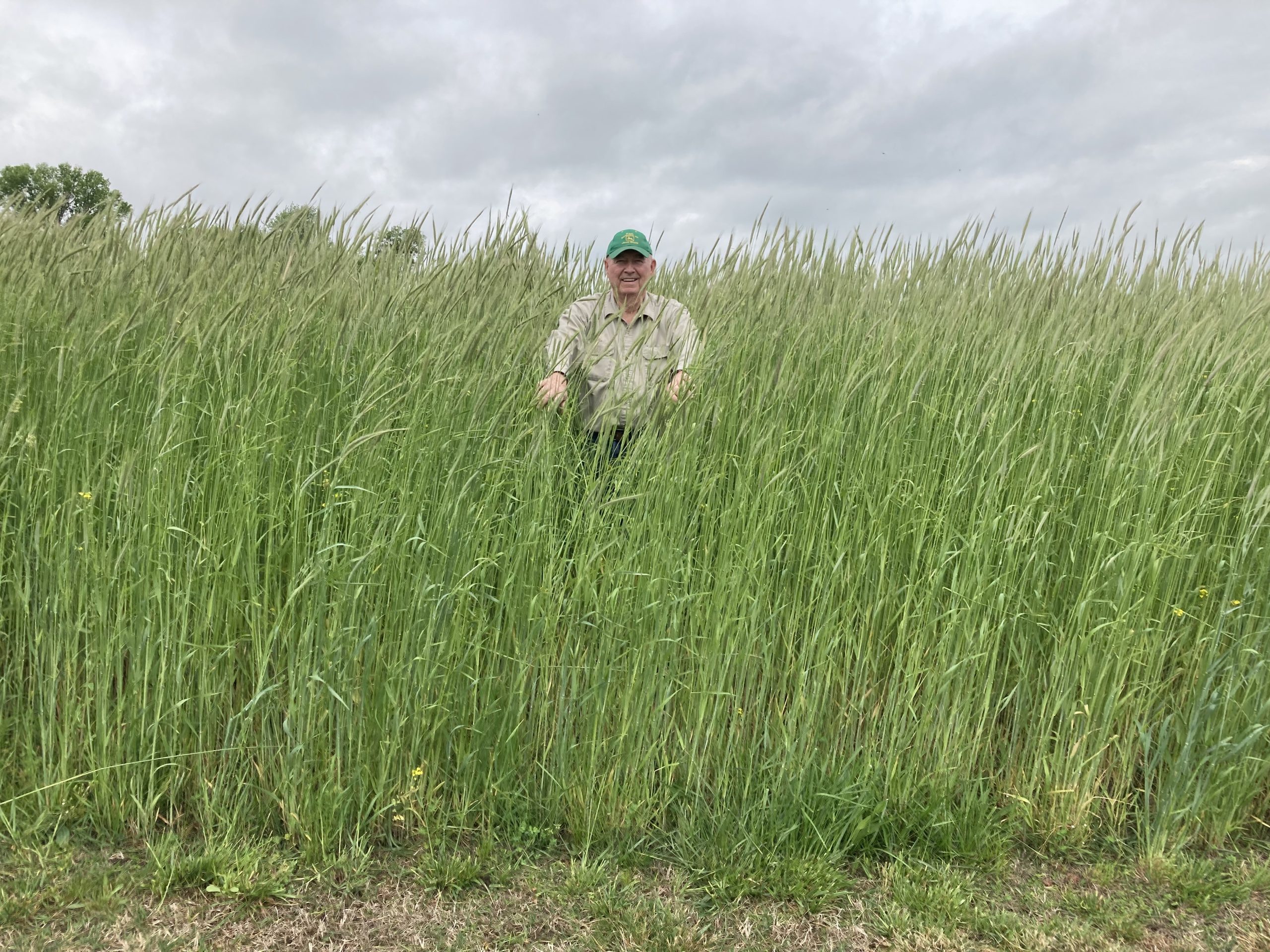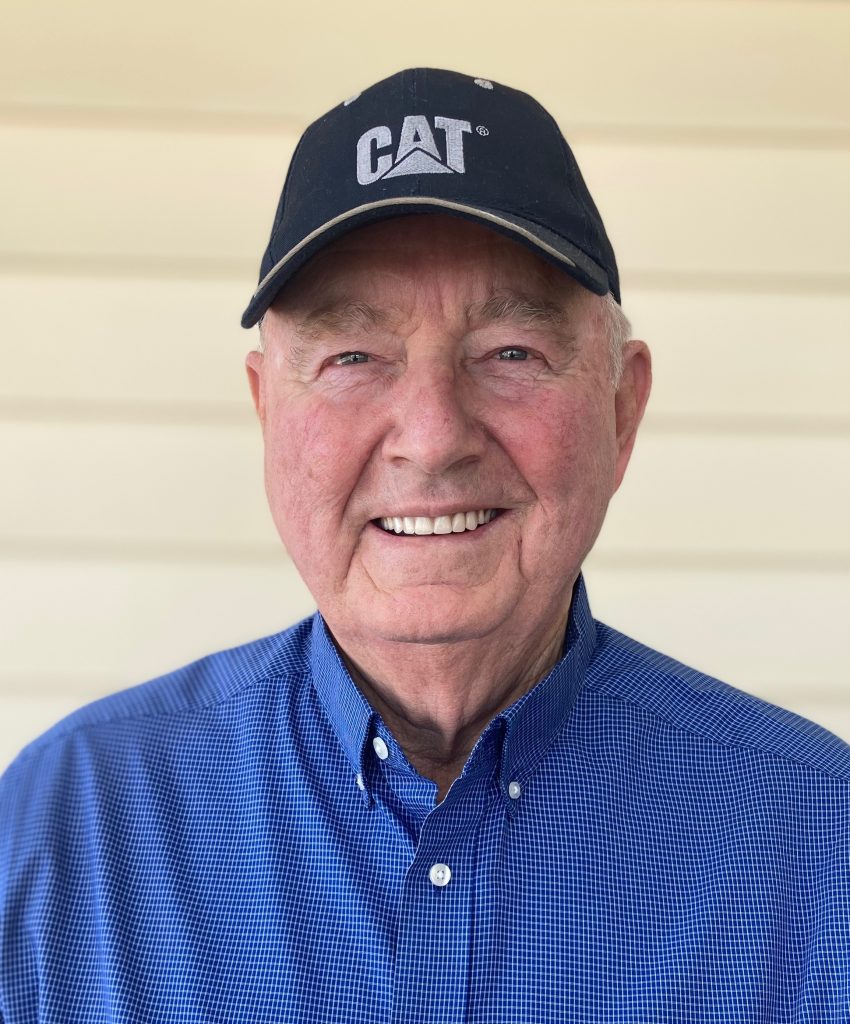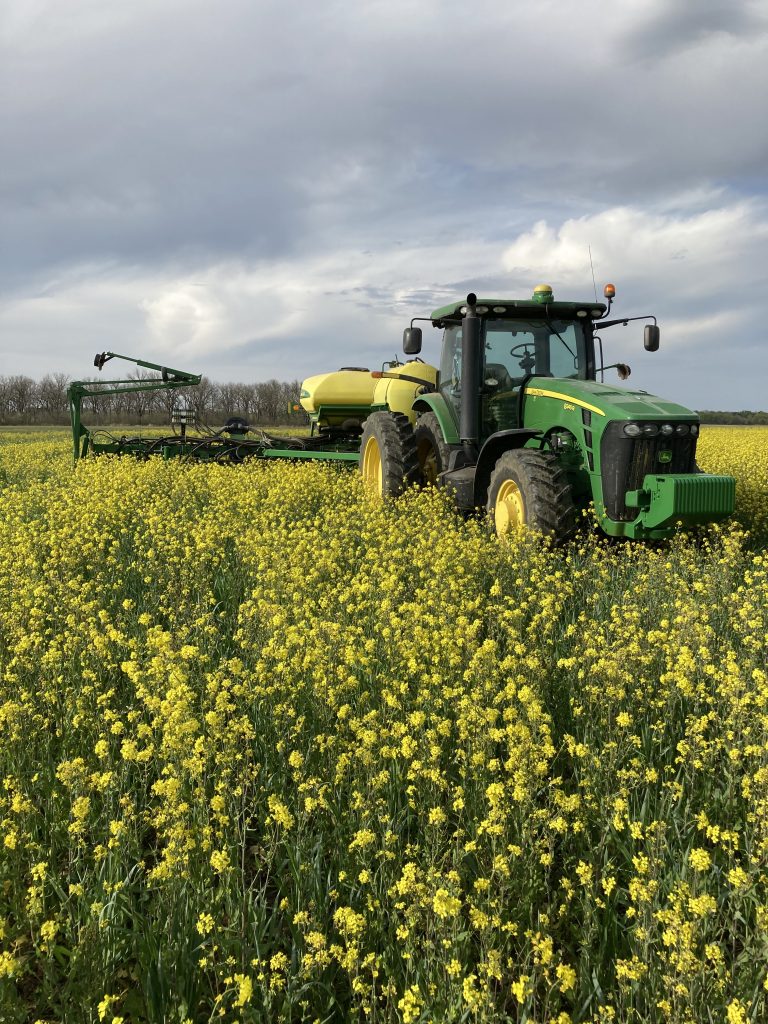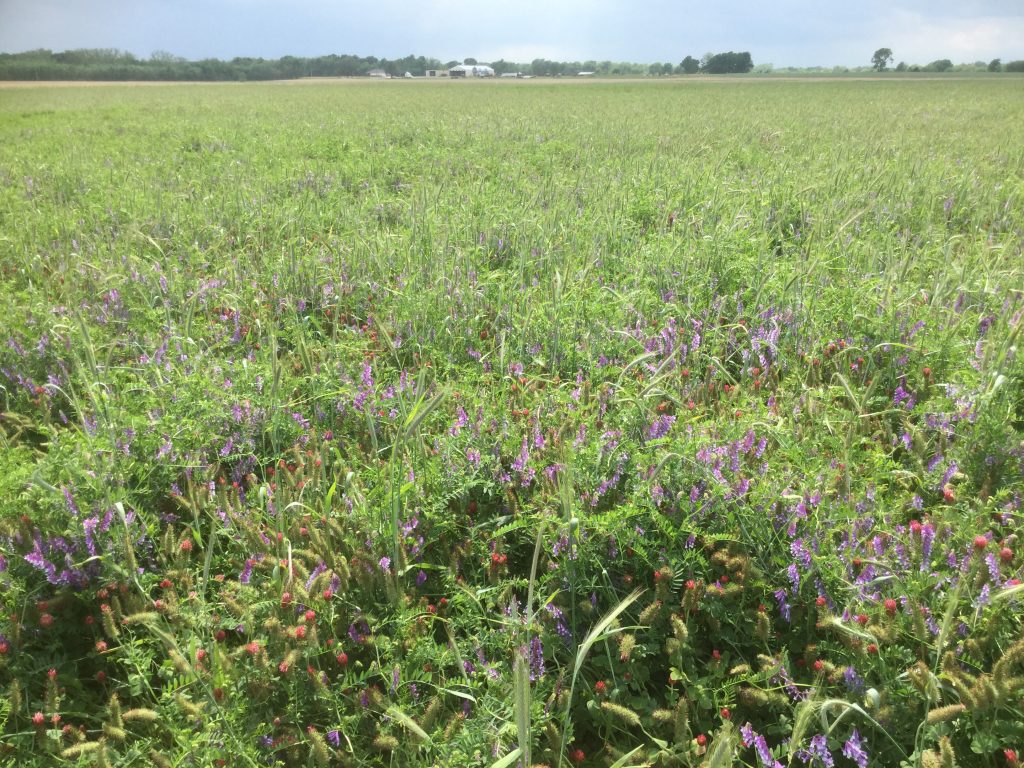Herriman Farm receives 2024 Oklahoma Leopold Conservation Award

Scotty Herriman has been farming for more than 50 years, and he has faced challenges that have forced him to adapt his practices—a process that has transformed him into an even better steward of the land.
Herriman and his wife, Jo, farm near South Coffeyville, Oklahoma. On Feb. 25, they were awarded the 2024 Oklahoma Leopold Conservation Award at the Oklahoma Association of Conservation Districts’ annual meeting.

“I was certainly humbled,” Scotty Herriman said. “I am thankful for the award, and it means a lot to me knowing who’s received it before me.”
This award is given to farmers, ranchers and forestland owners who are diligent in their conservation efforts to manage soil health, water quality and wildlife habitat on their properties. It includes a $10,000 monetary award and is given to landowners in 28 states.
Most of the Herrimans’ 2,000-acre dryland farm is nestled along the Verdigris River near the Kansas-Oklahoma border. Their primary crops are soybeans, corn and wheat with sorghum and cover crops mixed into the rotation.
Herriman became involved with the conservation district as a young farmer and has always looked for ways to improve his soil health. He considered switching his conventional tillage methods to no-till in the late 1990s and early 2000s but decided not to make the drastic change.
“It just didn’t seem like it would work here in our river bottom ground,” Herriman said.
It would ultimately take a historic flood to convince him to adopt no-till practices.
A 500-year flood
In June 2007, the Herrimans had a wheat crop ready to harvest, corn acres in the ground and plans to plant soybeans when the fields dried out. On June 26, it began to rain and after five days, the Verdigris River crested above 30 feet. About 20 to 21 inches fell 60 miles upriver to the north of the farm, leading to a catastrophic flooding event.
“I knew we were in dire straits when it was already at the 100-year flood stage, and still coming on,” Herriman recounted.
A levee along the river broke due to the excessive rainfall, and the water engulfed a refinery in Coffeyville, Kansas, dumping 42,000 gallons of oil into the river. Herriman’s home and farmland were in the path of the water as it rushed out of the banks, flooding both.
“We have been through two 100-year floods in 1976 and 1986, so we knew what big floods were and how they could affect the land,” Herriman said. “But this one in 2007 was what I call a 500-year flood, and it moved a lot of soil. The water stayed on the ground for eight or nine days, and we only ended up harvesting 13 acres of crop that year. The oil that was in the water covered the land and painted everything around here.”
The easy option would have been to take the insurance check and retire from farming or begin another occupation, but Herriman chose to continue farming, even if the recovery of his soil would be long and laborious.

“My desire was to keep farming, but I honestly didn’t know how I was going to do it,” he said. “It crossed my mind that I was probably out of business, but at the same time I prayed for us to get through this somehow. Through my faith in God, I knew there was a chance, and I knew we could pull this thing out if he would help us, and he did. I tell others that have had wrecks like this that God will surely take you on through this, if you’ll just let him. I maintained some patience and followed the leads of a few other people, and I kept farming.”
The following year, Herriman was able to plant his fields. It was not a bumper crop, but it was progress. In 2009, yields were improving, and in 2010 he decided to try no-till soybeans and strip-till corn.
It was a decision that helped rebuild his soil profile and opened his eyes to progressive approaches to soil health and sustainability. Herriman said his no-till practices provide the stabilization his fields needed and protect them from heavy rain and extreme wind.
“I have no worries for blowing ground,” he said. “Nothing’s going to leave this area because of the residue cover that we’ve armored the soil with.”

Tangible results of no-till and cover crops
Herriman also credits cover crops when it comes to maintaining residue and soil moisture. Although he was interested in planting cover crops when he started no-till, it was not until 2016 when he was convinced the practices would benefit his fields.
“I had the struggle of getting into no-till, and then now you’re talking about covering the land with extra crops,” Herriman said. “I didn’t know if it would dry the soil out, but after learning more, I thought, this is the way that we’re going to do it.”
Herriman plants cereal rye every year as a main cover crop, but he also incorporates clover, turnips, radishes, and vetch. Additionally, he also grows rye for seed and sells it locally to other farmers and ranchers interested in integrating it as a cover crop.

Herriman believes that flooding event—as devastating as it was—pushed him to adopt more sustainable farming strategies, lowered input costs and improved his overall operation.
“I think I’m still in business because of the flood and changing to no-till,” he said. “On just the economics side, I’m saving a ton on fuel and labor.”
The Herrimans previously employed a hired hand for 25 years, but after he retired a couple years ago, they decided not to look for more help because going to no-till saves so much time.
“It’s just Jo and I, but we can handle it, since it’s no-till operation,” he said. “We don’t have to work ground, and we don’t use a lot of fuel. We just have a 16-row planter, sprayer, combine, and a grain cart.”
But Herriman is not just looking to lower his input costs by adopting no-till, he has also improved his overall crop yields—a fact proved by his success in the National Corn Growers Association’s yield contest. The Herrimans have won the dryland corn yield contest in Oklahoma four times.
“The last three years, we’ve been in a drought, and I’ve not been able to compete,” Herriman said. “But I hope this year that I can get in it again and take my shot. My dream has always been 300-bushel corn in Oklahoma on dryland and I think I can do it.”
Herriman’s personal best yield was in 2014 when he raised a 260-bushel dryland corn crop, taking the top spot in the state.
“That was one of the things that convinced me that no-till will work,” he said. “Some think you’re going cut your yields, but after the first couple years greater things are going to happen.”
Lacey Vilhauer can be reached at 620-227-1871 or [email protected].
Photo: Scotty Herriman, who received the 2024 Oklahoma Leopold Conservation Award, stands in his cereal rye field. (Courtesy photo.)



